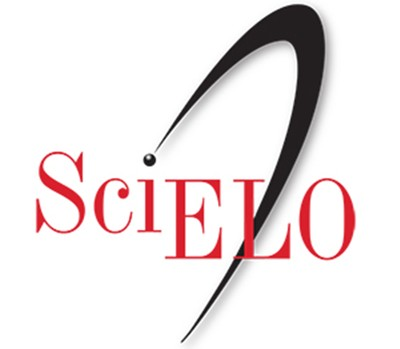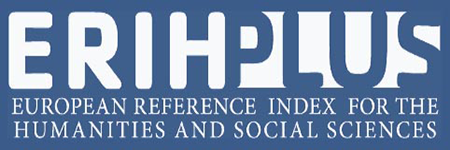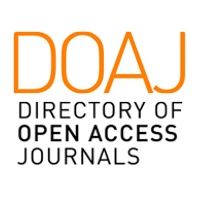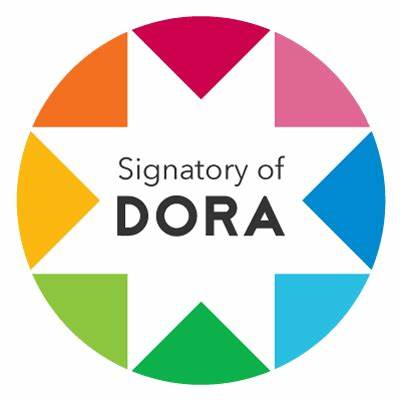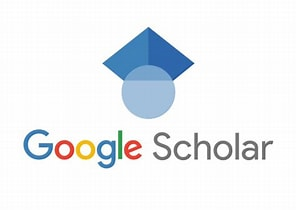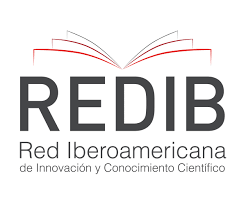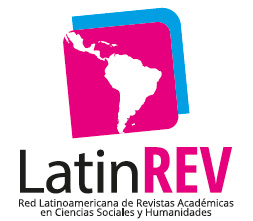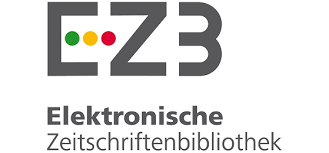Digital money platforms and mobile payment apps
Communication and media studies perspectives
DOI:
https://doi.org/10.51385/qydb7466Keywords:
platformization, apps, digital money, media, paymentsAbstract
Post-pandemic scenarios have functioned as laboratories for digital money platforms and mobile payment apps.In both technologies money forms and functions demonstrate their historical constitution as information and communication media. Thus, this article addresses these topics considering disciplines of design, communication and media studies.
To accomplish this, the study recovers two theories that analyse the infrastructural conditions and the symbolic-cultural dynamics involved in mediation of microeconomic practices. Moreover, the paper summarizes the history of infrastructural platformisation and of the institutional constructs that promoted mobile money. Then, a key point is made about a payment app arising from Billetera Santa Fe Program.
The methodological approach is carried out by analyzing government, legislative and business documentation and by using digital methods of review surveys. Conflicts, frictions, problematic dimensions and disputes of money apps are expected in these platformisation processes.
Downloads
References
Aktaş, C. (2017). The Evolution and Emergence of QR Codes. Cambridge Scholars Publishing.
Allums, S. (2014). Designing mobile payment experiences. O'Reilly Media.
Artopoulos, A., Cancela, V., Huarte, J., & Rivoir, A. (2019). “El último kilómetro del e-commerce” en: Tecnologías digitales: miradas críticas de la apropiación en América Latina, 259-282.
BCRA (2023, abril) Informe de Inclusión Financiera (IIF). Disponible en: https://www.bcra.gob.ar/Pdfs/PublicacionesEstadisticas/IIF-segundo-semestre-2022.pdf
BCRA (2023b, abril) Informe de pagos minoristas. Disponible en: https://www.bcra.gob.ar/Pdfs/PublicacionesEstadisticas/Informe-Mensual-de-Pagos-Minoristas-abril-2023.pdf
BCRA Comunicaciones “A” 5982; 6043; 6425; 6510. Disponibles en: https://www.bcra.gob.ar/SistemasFinancierosYdePagos/Buscador_de_comunicaciones.asp
Bunz, M., & Meikle, G. (2017). The internet of things. John Wiley & Sons.
Carballo, I., y Bartolini, M. (2020). “Pagos Digitales para la Inclusión Financiera de poblaciones vulnerables en Argentina”. Económica, 66.
Casasús, J. (1974). Teoría de la imagen. Salvat.
Cavallero, L., Gago, V., & Perosino, C. (2021). “¿De qué se trata la inclusión financiera? Notas para una perspectiva crítica”. Realidad Económica, 51(340), 9.
Coeckelbergh, M. (2016). Money machines. Routledge.
Dieter, M., Gerlitz, C., Helmond, A., Tkacz, N, van der Vlist, F. y Weltevrede, E. (2019). “Multi-situated app studies: Methods and propositions”. Social Media + Society, 5(2), 1–15. DOI: 10.1177/2056305119846486.
Dodd, N. (2016). The Social Life of Money. Princeton University Press.
Gobierno Provincia Santa Fe (2022). Informe de gestión – 1° mayo 2022. Disponible en: https://www.santafe.gov.ar/index.php/web/content/view/full/242438 Último acceso: enero 2023.
Gobierno Provincia Santa Fe (2023). Informe de gestión – 1° mayo 2023. Disponible en: https://www.santafe.gob.ar/documentos/Informe_de_gestion_2023.pdf Último acceso: octubre 2023.
Genc-Nayebi, N., & Abran, A. (2017). “A systematic literature review: Opinion mining studies from mobile app store user reviews”. Journal of Systems and Software, 125, 207-219.
Gilbert, E. (2005). “Common cents: situating money in time and place”. Economy and Society, 34(3), 357-388.
Gloerich, I., Lovink, G., & de Vries, P. (2018). MoneyLab Reader 2. Institute of Network Cultures.
Helmond, A. (2015). “The platformization of the web”. Social media + society, 1(2). DOI: 10.1177/2056305115603080.
Ingham, G. (2004). The nature of money. John Wiley & Sons.
Krämer, S. (2015). Medium, messenger, transmission. Amsterdam University Press.
Kudina, O., & Verbeek, P. P. (2019). “Ethics from within: Google Glass, the Collingridge dilemma, and the mediated value of privacy”. Science, Technology, & Human Values, 44(2), 291-314.
Lampland, M., & Star, S. L. (Eds.). (2009). Standards and their stories. Cornell University Press.
Lazzarato, M. (2013). La fábrica del hombre endeudado. Amorrortu.
Lovink, G., Tkacz, N., & de Vries, P. (2015). MoneyLab Reader 1. An Intervention in Digital Economy. Institute of Network Cultures.
Marazzi, C. (2014). Capital y lenguaje. Tinta Limón.
McLuhan, M. (1996). Comprender los medios de comunicación. Paidós
Ministerio de Economía (2021). Estrategia nacional de inclusión financiera 2020-2023. Disponible: https://www.argentina.gob.ar/sites/default/files/enif_2020-23_vf_011220_con_prologo_1.pdf
Ministerio de Economía (2021b). Plan Nacional de educación financiera. Disponible: https://www.argentina.gob.ar/sites/default/files/pnef_2022_1.pdf
Morris J.W. y Elkins E. (2015). “There’s a history for that: Apps and mundane software as commodity”. The Fibreculture Journal, 25(1), 62–87.
Morris, J.W. y Murray S. (Eds) (2018). Appified: Culture in the Age of Apps. University of Michigan Press.
Natile, S. (2020). The exclusionary politics of digital financial inclusion: Mobile money, gendered walls. Routledge.
Nain, A., & Jung, P. G. (2021). Understanding Money: Philosophical Frameworks of Monetary Value. Taylor & Francis.
Orrell, D., y Chlupatý, R. (2016). The evolution of money. Columbia University Press.
Parks, L. (2013). “Earth observation and signal territories: Studying US broadcast infrastructure through historical network maps, Google Earth, and fieldwork”. Canadian Journal of Communication.
Plantin, J. C., Lagoze, C., Edwards, P. N., & Sandvig, C. (2018). “Infrastructure studies meet platform studies in the age of Google and Facebook”. New media & society, 20(1), 293-310. DOI:10.1177/1461444816661553.
Programa Billetera Santa Fe (2021). “Términos y condiciones”. Disponibles en: https://www.santafe.gob.ar/ms/billeterasantafe/wp-content/uploads/sites/44/2021/11/TERMINOS-Y-CONDICIONES-PLUS-PAGOS.-v15.11.21.pdf Último acceso: octubre 2023.
Proyectos de la Cámara de Diputados de la Provincia de Santa Fe. Sistema Integral de Expedientes Legislativos. Disponibles en: http://186.153.176.242:8095/index.php. Último acceso: Octubre 2023. Proyectos de comunicación (numeración asignada) 2021: 42062, 43345, 44097, 44351, 44424, 44592 , 44703, 44803, 45096, 45136, 45330, 45718, 45780, 46064, 46135. 2022; 46277, 46333, 46482, 47192, 48226, 48332, 48498, 49424. 2023: 50529, 51389, 51427. Proyecto de Ley 2022: 49300.
Rogers, R. (2019). Doing digital methods. Londres: Sage.
Rossi, L. S. (2022). “Plataformización de la circulación: de las muchedumbres computables a la integración conflictiva”. Revista Crítica y Resistencias, 15, pp. 77-98.
Santos, W. (2020) (26 de agosto). “Financial APIs Continue to See Big Growth”. Disponible en: https://www.programmableweb.com/news/financial-apis-continue-to-see-big-growth/research/2020/08/26 . Última consulta: marzo 2023.
Schröter, J. (2018). “Das Geld und die Medientheorie“. Zeitschrift für Medienwissenschaft, 10(18-1), 59-72.
Schröter, J. (Hg.) (2014). Handbuch Medienwissenschaft. Stuttgart: J. B. Metzler
Srnicek, N. (2018). Capitalismo de plataformas. Caja Negra.
Swartz y Stearns (2019) “Money and its Technologies. Making money move in the modern era.” A cultural history of money: in the modern age. Nelms, T. y Pedersen, D. (ed.). Bloomsbury.
Swartz, L. (2021). New Money: How Payment Became Social Media. Yale UP.
Van Dijck, J., Poell, T., y De Waal, M. (2018). The platform society: Oxford university press.
Vasilachis, I. (coord.) (2007). Estrategias de investigación cualitativa. Gedisa.
Weatherford, J. (1997). La historia del dinero. Andrés Bello.
Wennerlind, C. (2001). “Money talks, but what is it saying? Semiotics of money and social control”. Journal of Economic Issues, 35(3), 557-574.
Westermeier, C. (2020). “Money is data: the platformization of financial transactions”. Information, Communication & Society, 23(14), 2047-2063.
Zelizer, V. (2000). “Fine tuning the Zelizer view”. Economy and society, 29(3), 383-389.
Downloads
Published
Issue
Section
License
Copyright (c) 2025 Luis Sebastián R. Rossi

This work is licensed under a Creative Commons Attribution-NonCommercial-ShareAlike 4.0 International License.
No se permite un uso comercial de la obra original ni de las posibles obras derivadas, la distribución de las cuales se debe hacer una licencia igual a la que regula la obra original.

